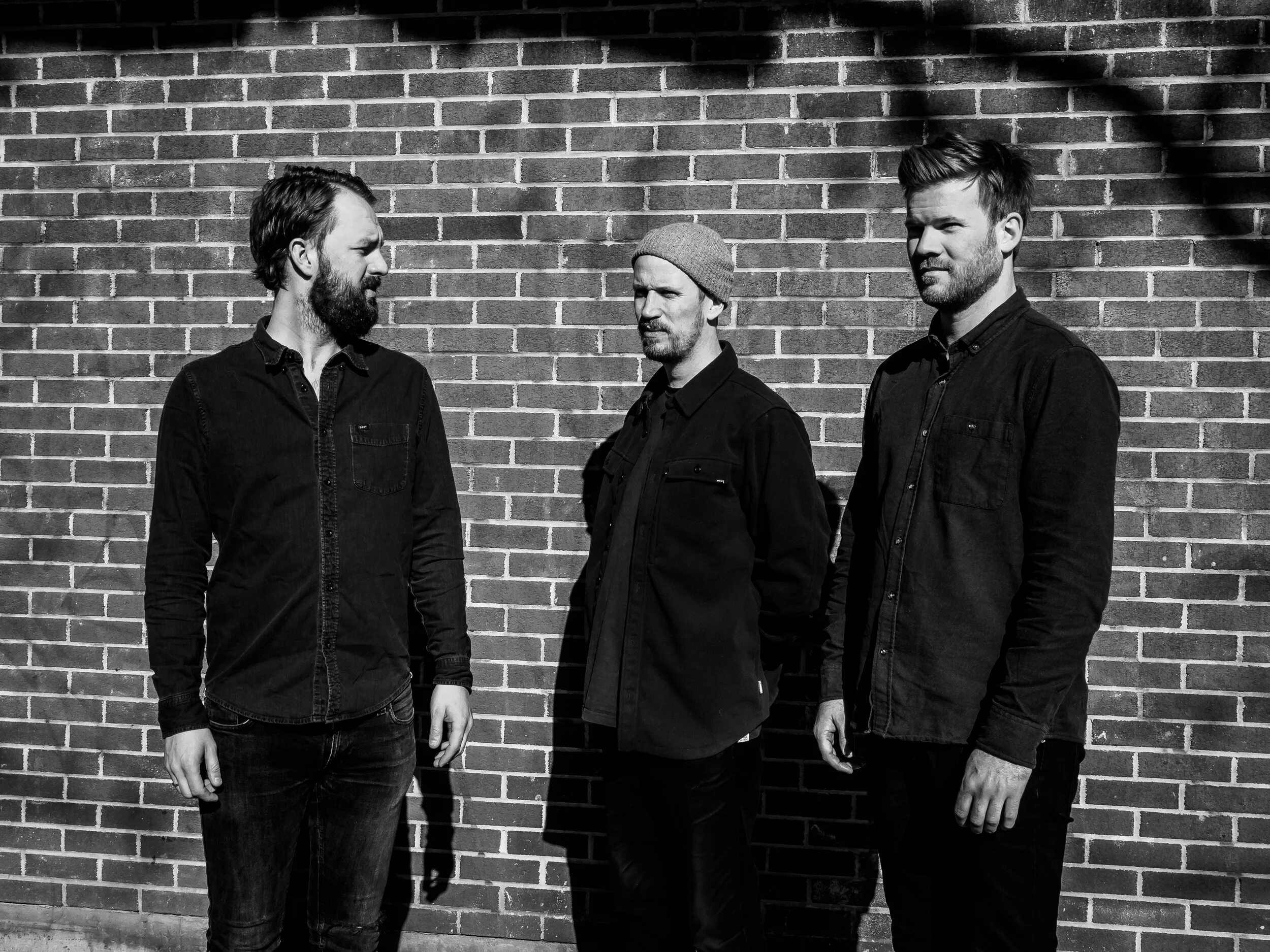Gard Nilssen Settles in
Gard Nilssen’s Acoustic Unity—Nilssen, Petter Eldh, André Roligheten (photo: Peter Gannushkin/downtownmusic.net)
For more than a decade Gard Nilssen has been a force in Norwegian music, a drummer of uncommon range and interests. He’s propelled countless projects, but starting with the quartet Cortex back at the beginning of the current decade he’s emerged as an impressive composer and bandleader, imbuing his ardor for hard swinging post-bop with throttling energy and a sensitive touch. While he continues to lend his tasteful playing to other projects where his vision isn’t as obvious—including a quartet led by Polish saxophonist Maciej Obara, which drops a new ECM album, Three Crowns, in late October, and the shape-shifting Trondheim Jazz Orchestra, which masterfully adapts itself to the needs of a wide range of collaborators—he’s at his best with two recent albums from a pair of bands he’s been involved with for a while now.
To Whom Who Buys a Record (Odin)—the title a sly Ornette Coleman wink that bleeds directly into the addictively tuneful music--is the third and best album by his trio Acoustic Unity with the Berlin-based Swedish bassist Petter Eldh and Norwegian saxophonist André Roligheten. Straight out of the ferociously swinging gate the group opens with Nilssen tune called “Cherry Man,” which further cements an aesthetic inspired by bold explorers of preceding decades—there’s also a piece called “Elastic Circle,” which would seem to pay homage to both Jan Garbarek and Chick Corea—although the music itself salutes the group’s antecedents most effectively. A tune called “Acoustic Unity” winks at Albert Ayler, although the trio prefers a more buoyant, deeply melodic attack. On that composition—by the leader and Roligheten—a steeplechase structure wends through fast-paced slaloming and slo-mo corkscrews, with a sudden turnaround and a graceful reclamation in less than four eventful minutes. On the saxophonist’s “Omkalfatring” he plays two horns simultaneous, but his pointillistic blowing manages something more effective than the usual unison showboating—although those twin lines are closely aligned, he impressively varies their rhythmic patterns, truly making it seem as if two folks are playing saxophone.
On the hotly simmering ballad “Broken Beauty,” another Coleman salute, it’s bassist Eldh that breaks from the shadows--although his presence is crucial throughout—with a warmly graceful yet full-bodied, thrumming solo. Even when Roligheten plays soprano as on “Masakräke,” which you can check out below, where Nilssen’s polyrhythmic clatter is astonishing, his blend of precisely jagged phrasing and biting tone achieves surprising muscularity and agility. While there many not be anything especially novel about the trio’s sound, its crispness and thrust are hard to resist, and the music has that rare quality of reminding jazz listeners why they got hooked on the stuff to begin with, which is no small feat.
Nilssen’s longest-running group is Bushman’s Revenge, a trio with guitarist Even Helte Hermansen and bassist Rune Nergaard that’s gone through numerous stylistic incarnations since debuting back in 2007 with Cowboy Music (Jazzaway)—where the combo sounded, more or less, like a conventional jazz guitar trio. Soon after the band ramped up the energy and volume, increasingly shifting toward a proggy hard rock sound—a shift that, honestly, caused me to lose interest. But a few years ago Bushman’s Revenge revamped its attack again, bringing in more space and dynamic range, and that transition has continued with its latest and best effort Et Hån Mot Overklassen (Hubro)—the title translates as A Mockery of the Upper Class. There’s still a healthy shot of prog rock ideals in the music, but the touch is lighter than ever, thanks largely to the drummer’s exquisitely measured playing. He adds some lovely vibraphone shadings on the opening track “Sly Love With a Midnight Creeper,” which slinks along discreetly, as Hermansen’s reverberant lines shimmer like reflected moonlight, with a Hendrix-like tone despite the hushed articulation. That piece bleeds into a haunting group improvisation titled “Folk Kremtar no Av og Til Berre I Lause Lufta og” that’s pure, hovering atmosphere pregnant with ominous portent—it feels unlike anything the trio has done before. I don’t know if Nilssen is referring to Pharoah in the title of his “Happy Hour For Mr. Sanders,” which you can hear below, but it’s one of several pieces here that reminds me of the classic album the saxophonist cut with guitarist Sonny Sharrock, Ask the Ages. As with that recording, this new collection manages to swing and float while unleashing some gorgeously punishing guitar work—virtuosic in its concision and moodiness without grandstanding or needless excess.
Today’s playlist:
Tiziano Tononi & Daniele Cavallanti Nexus, Experience Nexus! (Rudi)
Inna Baba Coulibaly, Sahel (World Circuit)
Nels Cline 4, Currents, Constellations (Blue Note)
Glenn Kotche, John Luther Adams: Ilimaq (Cantaloupe)
Len Lye, Composing Motion: The Sound of Tangible Motion Sculpture (Atoll)




